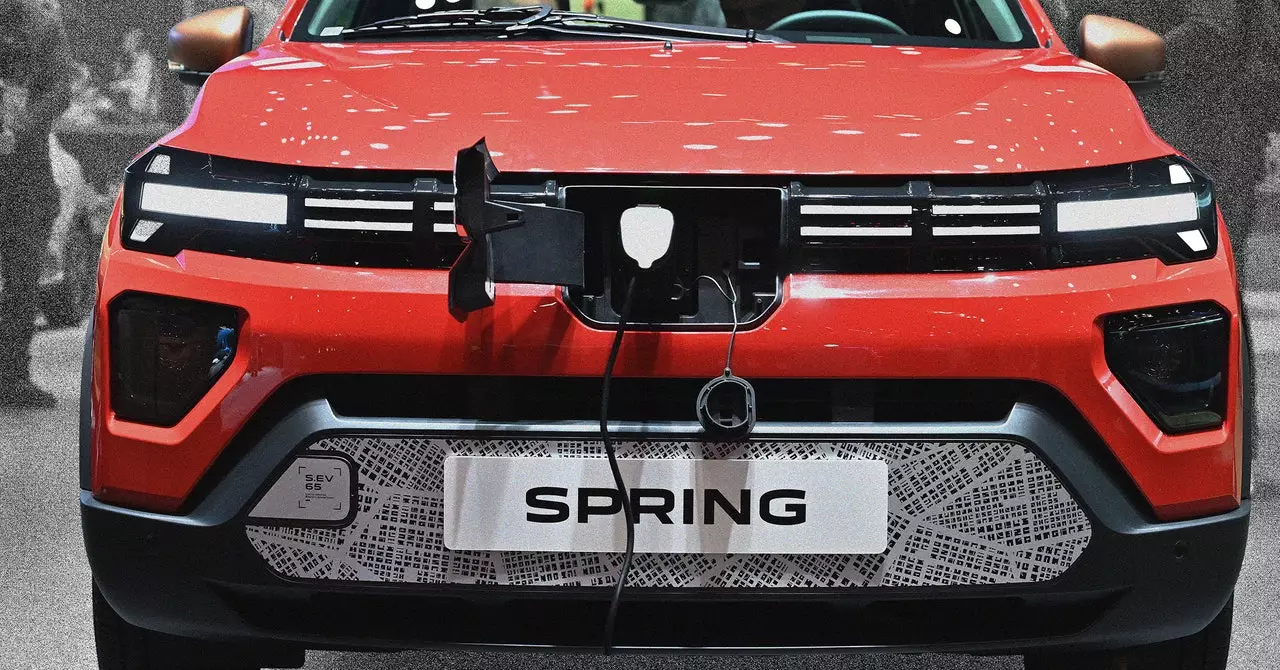The automotive industry finds itself at a crossroads, particularly in the context of the European market where newly imposed tariffs are reshaping the competitive landscape. These tariffs, designed to curb the influx of Chinese electric vehicles (EVs), have triggered a cascade of strategic responses from key players. With rising concerns over trade fairness, the ramifications extend beyond just pricing; they influence strategic manufacturing decisions, competitive advantages, and future collaborations in an increasingly interconnected global economy.
Among the most notable players benefiting from these shifts is BYD (Build Your Dreams), a titan in the Chinese automotive space. Ilaria Mazzocco, a senior fellow at the Center for Strategic and International Studies, has underscored BYD’s adeptness at controlling production costs, which allows it to position itself competitively within the market despite tariff pressures. Unlike many of its Chinese counterparts, BYD seems primed to not only mitigate the impacts of the tariffs but potentially exploit them by capturing market share from less prepared manufacturers. Their ability to offer EVs at competitive pricing is particularly compelling, especially as other Chinese manufacturers might find their pricing structures hampered by tariffs.
In contrast, manufacturers like Volkswagen are gearing up for a storm as they prepare to navigate the higher tariffs imposed on their models produced in China. The stark contrast in tariff percentages highlights an uneven playing field: while Tesla enjoys a lesser tariff due to its production adjustments, European manufacturers face a daunting challenge ahead.
Facing tariffs, some Chinese automakers may consider relocating their manufacturing bases to Europe, a move already adopted by players like Volvo. Establishing plants closer to their target market not only serves to circumvent tariffs but also resonates with European sentiment favoring local production. The potential impact on local employment and economic growth cannot be overlooked; indigenous production can engender a sense of commitment to the region while bolstering the economy.
However, Mazzocco remains cautious about overly optimistic projections regarding these manufacturing shifts. While announcements of new factories may seem promising, history indicates that such ventures require time and investment before yielding tangible outcomes. The challenge lies not just in setting up production facilities, but in ensuring they operate efficiently and effectively in the competitive European market.
Despite the gloomy backdrop painted by the tariff vote, it remains crucial to understand that the scenario is not yet set in stone. Comments from a European Commission official suggest a willingness to engage in dialogue with Chinese representatives, opening the door to negotiations that could yield alternative solutions such as import quotas or price floors on EVs.
Such negotiations could reshape the nature of competition. For instance, setting a price floor may aid manufacturers in achieving higher profit margins, thus compelling them to innovate in terms of quality and service offerings. This could, in turn, enhance the prestige of Chinese EV brands, allowing firms like BYD’s luxury sub-brand, Yangwang, to thrive amid the evolving paradigm.
As Europe grapples with the complexities of balancing fair competition against market protectionism, the future remains uncertain for both Chinese and European automotive manufacturers. Alicia García-Herrero, chief economist for Asia Pacific at Natixis, echoes this sentiment, emphasizing the need for a unified European stance to provide leverage in negotiations. The passage of tariffs signals a commitment to maintaining a competitive market, yet this commitment should not overshadow the potential for dialogue and collaboration.
While the imposition of tariffs may present immediate challenges, they also pave the way for transformative approaches within the automotive industry. The fine line between protectionism and collaboration will dictate not only the fate of Chinese manufacturers in Europe, but also the broader evolution of the global automotive market. As stakeholders recalibrate their strategies, one thing is clear: the dynamics of competition are rapidly evolving, reshaping how manufacturers approach the future in this new era of trade relations.

